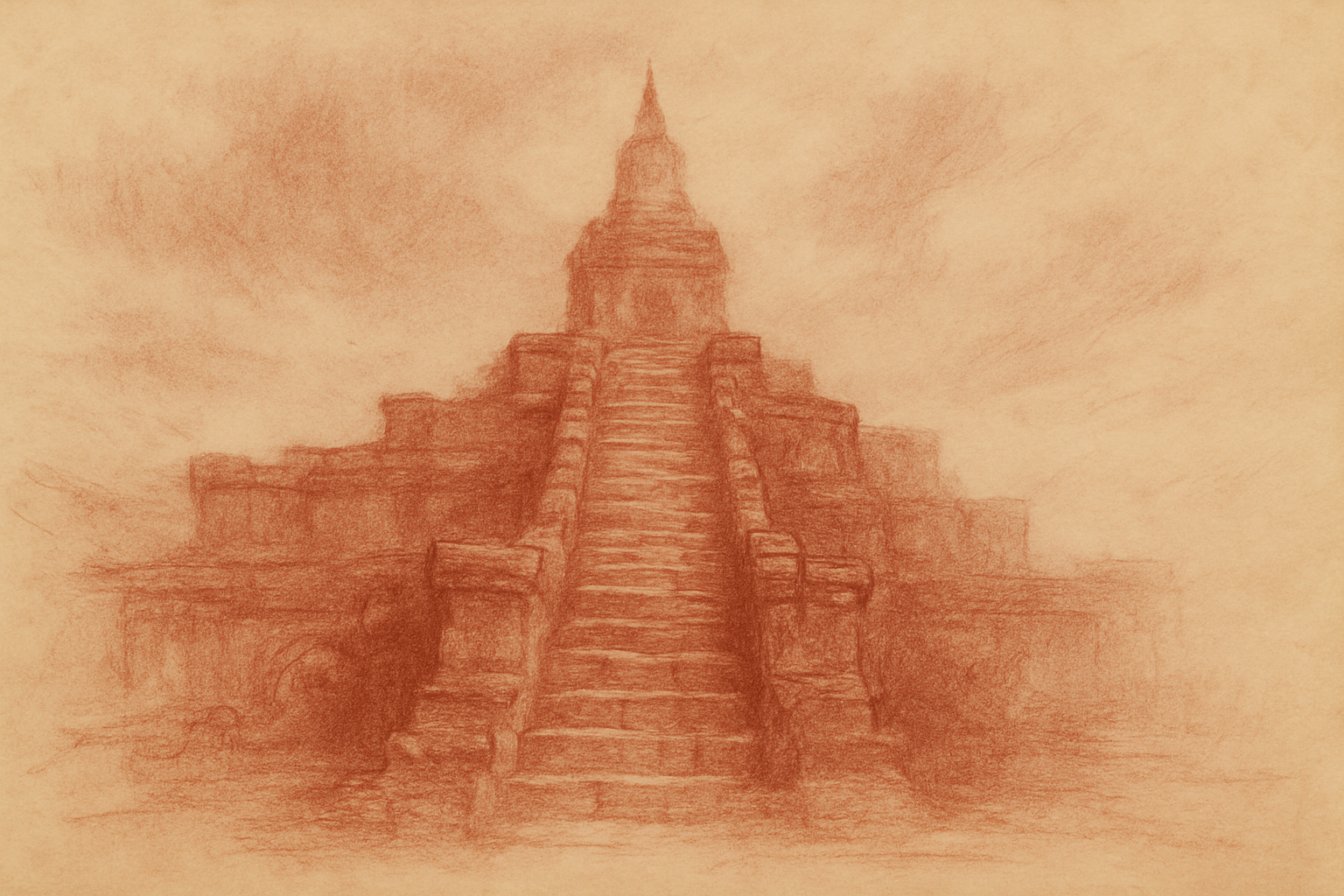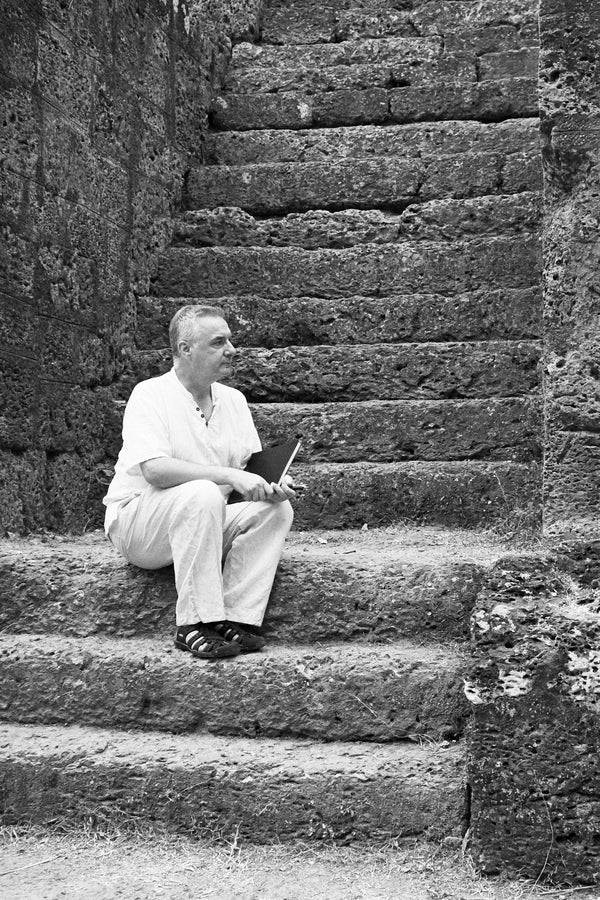Complimentary worldwide shipping on orders over $400 · No import tariffs for most countries
Complimentary worldwide shipping on orders over $400 · No import tariffs for most countries

Phimeanakas and the Goddess of Sovereignty
2 min read
A Sacred Architecture of Union, Surrender, and Sky
To reign in stone is to bow to the spirit beneath it.
Hidden within the walled heart of Angkor Thom rises a quiet mountain of stone—less grand than Bayon, less vast than Angkor Wat, yet pulsing with a more intimate gravity. In modern Khmer it is called Vimean Akas, the Heavenly Palace. But its legend is older than language.
Phimeanakas is a temple of thresholds—between day and night, seen and unseen, king and goddess. Built under the reigns of Rajendravarman and Suryavarman I, it was never meant for public devotion, but for private ascent. Its name echoes the Sanskrit Vimana (celestial palace) and Akasha (sky or ether), and in Khmer pronunciation—Vi-Mern-Akas—the syllables descend like sacred steps.
Yet this is no mere monument. It is myth given form.
The 13th-century envoy Zhou Daguan, who came to Angkor from the Chinese court, recorded a tale whispered through these silent walls. Each night, he wrote, the Khmer king was bound by covenant to climb the golden tower and await the appearance of a divine woman—a Nāga who had taken human shape. She was no consort. She was the spirit of the land itself.
If she did not appear, it was an omen of the king’s death. If he failed to go, the kingdom would unravel.
This is not romance. It is a spiritual architecture: the king must surrender to the goddess whose body is the land. His authority flows from her. Only through this nightly act of devotion could balance be maintained between realms.
In Angkorian cosmology, the Nāga is no simple serpent. She is the guardian of waters, the mother of thresholds, the ancestral spirit of kingship. Her nine heads symbolise completion, sovereignty, and the breath of the cosmos. The king’s ascent was not for dominion, but for communion. A sacred joining. A silent vow.

Even the stones echo this truth.
Phimeanakas, though weathered now, once shimmered with golden light.
Like Ta Keo, it may have borne ornaments from Mon tradition,
its spire catching first dawn and last dusk.

But the true treasure was silence.
The kind a king would climb toward, night after night.
The kind that holds a kingdom together
when war drums fade.
Today, the golden tower is bare stone once more. The hush has deepened. But for those who walk gently through the Royal Enclosure—for those who pause beneath the moon and remember the old stories—her presence is not lost.

Not in form.
Not in flame.
But in that sacred stillness
that asks, quietly:
What do you bow to?
Guardians of the Threshold
Photographs from the Spirit of Angkor series by Lucas Varro
In the sacred architecture of Angkor, the naga is not mere ornament—it is guardian, threshold, and mythic bridge between realms. Carved into sandstone with coiled grace and ancient purpose, these serpents line the processional ways of the temples, their many heads flaring like lotus crowns, their bodies undulating across balustrades as if forever in motion.
Rooted in both Hindu and Buddhist cosmology, the naga once carried gods through the waters of creation and now stands sentinel at every sacred crossing. At Angkor, they mark the border between the human and the divine—protectors of silence, watchers of the unseen, timeless presences that hold the edge of light.
In this meditative collection from the Spirit of Angkor series, Lucas Varro turns his analogue cameras toward these sculpted serpents, capturing the mystery they still embody. Using large and medium format black-and-white film, each image is shaped by long exposure, chiaroscuro, and hand-toning—revealing not only the naga’s form, but its enduring stillness. A glint of dawn on weathered scales. A watchful gaze at the gate of stone.
Printed in limited editions on museum-grade Hahnemühle Bamboo paper, each photograph is accompanied by a Collector’s Print Package including poetic writings, curatorial texts, and field reflections from the artist’s quiet encounters with these mythic guardians.
This is a collection of thresholds—each naga a silent keeper of the crossing, where stone remembers what spirit never forgets.
Join My Studio Journal
Receive occasional letters from my studio in Siem Reap—offering a glimpse into my creative process, early access to new fine art prints, field notes from the temples of Angkor, exhibition announcements, and reflections on beauty, impermanence, and the spirit of place.
No noise. No clutter. Just quiet inspiration, delivered gently.
Subscribe and stay connected to the unfolding story.

Join My Studio Journal
Receive occasional letters from my studio in Siem Reap—offering a glimpse into my creative process, early access to new fine art prints, field notes from the temples of Angkor, exhibition announcements, and reflections on beauty, impermanence, and the spirit of place.
No noise. No clutter. Just quiet inspiration, delivered gently.
Subscribe and stay connected to the unfolding story.




